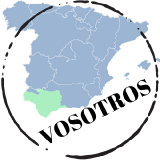2.4: El Imperfecto
- Page ID
- 162881
The imperfect
You have learned to use the past tense using the "pretérito". Spanish has another tense to describe the past, the "imperfecto." In the paragraph below, all the verbs in bold occur in the imperfect tense. Unlike the preterit, which describes completed actions, the imperfect describes incomplete, ongoing, or repeated actions in the past.

De niño, siempre me gustaba ir a la casa de mis abuelos. Jugaba en su jardín y miraba la tele con ellos por la noche. También ayudaba a mis abuelos en la cocina. Mi abuelo era cocinero profesional y mi abuela hacía unos postres increíbles. Recuerdo que durante mis visitas pasábamos horas en la cocina preparando galletas de chocolate. Siempre tenían todos los ingredientes necesarios: la harina, los huevos, la sal, el azúcar, y por supuesto, el chocolate. !Qué ricas eran esas galletas!
Conjugation of Regular verbs
In the chart below, you will see the verbs "-ar", "-er" and "-ir" ending in the imperfect tense. Note that the "-er" and "-ir" verbs have the same endings. Included is the conjugation of the vosotros/vosotras forms.
| Subject Pronoun | -ar endings | -er/-ir endings |
| Yo | -aba | -ía |
| Tú | -abas | -ías |
| Usted, él, ella | -aba | -ía |
| Nosotrxs | -ábamos | -íamos |
| Ustedes, ellos, ellas | -aban | -ían |
Conjugation notes for "vos" and "vosotros" can be found by clicking the respective icons:
The conjugation of tomar, leer and escribir
| Pronoun | tomar | leer | escribir |
| Yo | tomaba | leía | escribía |
| Tú | tomabas | leías | escribías |
| Usted, él, ella | tomaba | leía | escribía |
| Nosotrxs | tomábamos | leíamos | escribíamos |
| Ustedes, ellos, ellas | tomaban | leían | escribían |
Irregular verbs in the imperfect
The imperfect tense is very regular with only three irregular forms: "ir," "ser," and "ver"
| Subject Pronoun | ir | ser | ver |
| Yo | iba | era | veía |
| Tú | ibas | eras | veías |
| Usted, él, ella | iba | era | veía |
| Nosotros/nosotras | íbamos | éramos | veíamos |
| Ustedes, ellos, ellas | iban | eran | veían |
 |
Clicking on the icon to the left will bring up a video lesson on how to form the imperfects in Spanish. |
¡A practicar!
Completa las oraciones conjugando los infinitivos en el imperfecto.
- Cuando mi mamá _______________ (ser) niña, _______________ (pensar) que lo mejor de estar enfermo _______________ (ser) guardar cama.
- Pero con frecuencia, ella _______________ (resfriarse) durante las vacaciones de verano.
- Sus padres le _______________ (comprar) sus cómics favoritos.
- También, mi mamá y sus hermanos _______________ (jugar) videojuegos en el Atari.
- En ocasiones, ellos _______________(alquilar) películas en la tienda de videos y las ________ (ver) en su casa.
- Cuando mi mamá _______________(estar) aburrida, ella _______________ (escuchar) música en su Walkman.
- A ella le _______________ (encantar) la banda The Cure y le _______________ (fascinar) las películas románticas de los actores del Brat Pack.
- Al final del verano, mi mamá y su familia _______________ (viajar) a la playa y ahí, ellos _______________ (desconectarse) por completo de la tecnología.
- La familia _______________ (pasar) el tiempo tomando el sol y mi mamá y sus hermanos _______________ (nadar).
- Por las noches, ellos _______________ (hacer) una fogata (bonfire) en la playa o _______________ (pasar) tiempo con los juegos de mesa como Monopolio. ¡Mi mamá _______________ (divertirse) mucho en sus veranos!
- Answer
-
1. era, pensaba, era
2. se resfriaba
3. compraban
4. jugaban
5. alquilaban, veían
6. estaba, escuchaba
7. encantaba, fascinaban
8. viajaban, se desconectaban
9. pasaba, nadaban
10. hacían, pasaban, se divertía
Contributions and Attributions
This page was adapted from !Naveguemos juntos! by Mendoza, Gutiérrez, Ho, Lin, and Lugo



